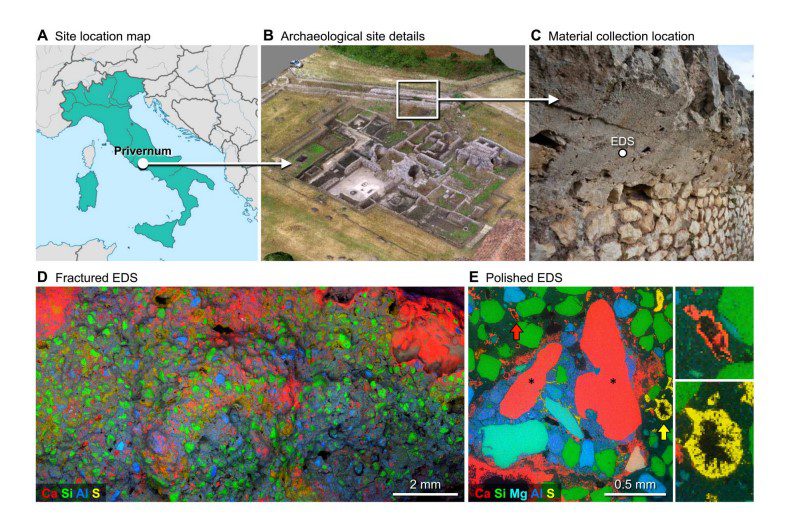Hot mixing: Mechanistic insights into the durability of ancient Roman concrete

Ancient Roman concretes have survived millennia, but mechanistic insights into their durability remain an enigma. Here, we use a multiscale correlative elemental and chemical mapping approach to investigating relict lime clasts, a ubiquitous and conspicuous mineral component associated with ancient Roman mortars. Together, these analyses provide new insights into mortar preparation methodologies and provide evidence that the Romans employed hot mixing, using quicklime in conjunction with, or instead of, slaked lime, to create an environment where high surface area aggregate-scale lime clasts are retained within the mortar matrix. Inspired by these findings, we propose that these macroscopic inclusions might serve as critical sources of reactive calcium for long-term pore and crack-filling or post-pozzolanic reactivity within the cementitious constructs. The subsequent development and testing of modern lime clast–containing cementitious mixtures demonstrate their self-healing potential, thus paving the way for the development of more durable, resilient, and sustainable concrete formulations.
